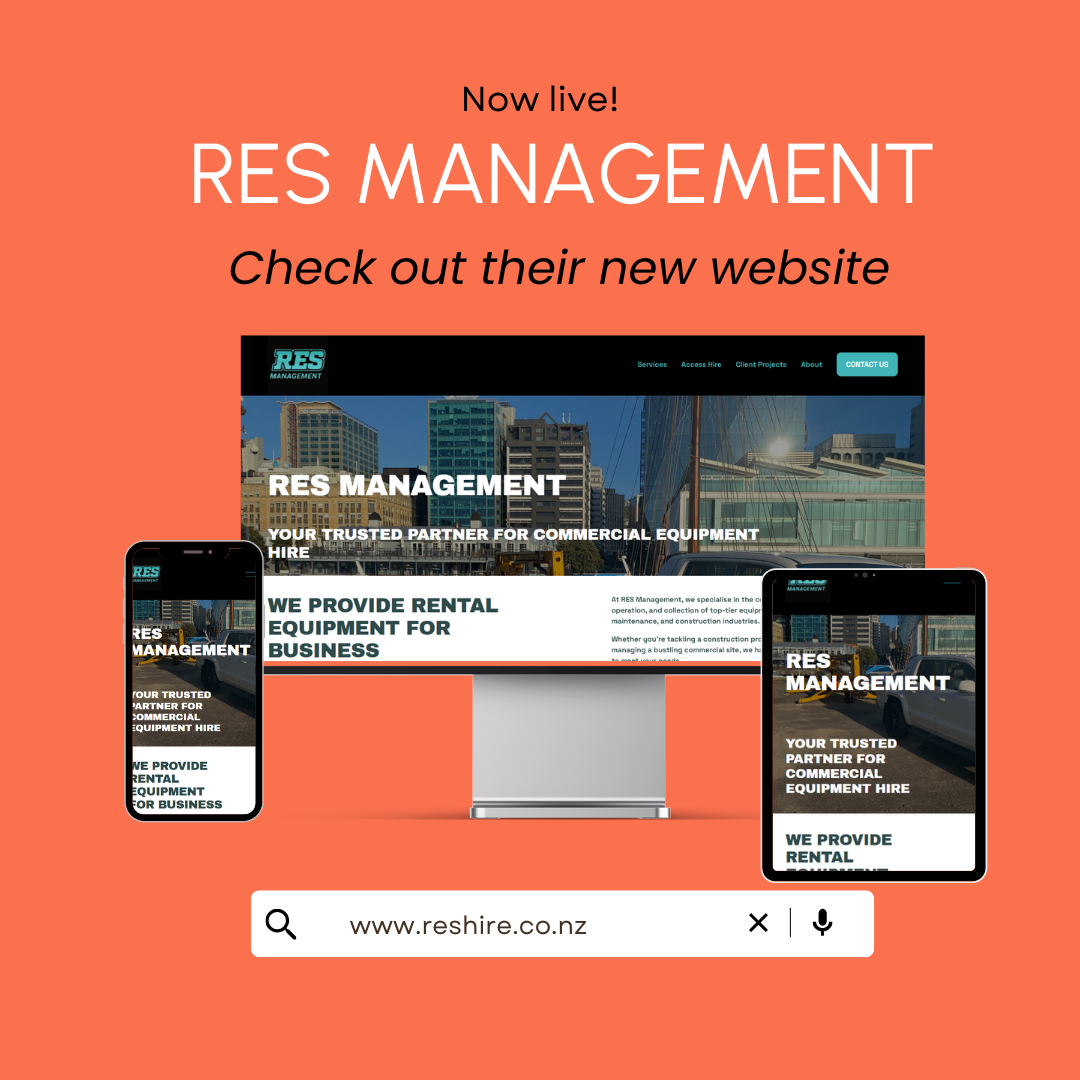Hire & Rental Business, Wellington NZ
Page-by-page Website Design
In their fifth year of steady growth, this service-based small business recognised the need to establish a digital presence—without overextending their resources. Working in an industry built on trust and personal relationships, they partnered with us to create a practical six-month marketing plan that laid the foundation for a strong online profile while keeping costs predictable. This case study highlights how a thoughtful, phased approach can deliver measurable impact without the pressure of a full website build from day one.
The Challenge: Build Profile Online
In their fifth year of operation, this successful small business had built a strong reputation through word-of-mouth and excellent service delivery. But with plans to expand beyond their immediate market, along with looking to attract different clientele, the lack of digital profile was a limiting factor.
Finding a solution that could evolve with time, that didn’t require a heavy upfront investment, but also delivered on agreed goals was pivotal.
An assessment of their target audience’s search/online behaviour, as well as the competitive positioning, and clarifying their proposition was all part of the research.
Preceding the website build was a rock-solid marketing plan, including content plan and buyer persona profiles
-
Understanding who you’re talking to, how they operate, what they care about, what else they’re dealing with day-to-day and what questions they’ll likely have, are all important considerations when building a plan.
-
Prioritising your content development with a strong sitemap, and keyword assignment to each page, helps to work through what information should belong where, and what the order of development needs to be.
-
Understanding what is coming down the track let’s both parties prepare, which can help with resource allocation, but also finding imagery, creating graphical elements, or sourcing quotes or product information so it’s ready come time to upload to the site.
With a plan in hand, the development of the website can take place over several months.
Rather than jumping straight into a full-scale website build, we collaborated to create a practical and cost-effective marketing plan. This strategy allowed us to prioritise essential activity to grow their digital footprint gradually while keeping marketing spend predictable and manageable. The digital footprint started as just social pages, and come the conclusion of their inital programme of activity, will include professional business listings, optimised social channels, a full website developed page-by-page, regular content development, and more.
In undertaking a content strategy, including buyer personas, we were able to identify the style and type of content required on all digital platforms, and develop it accordingly.
Together, we:
Set clear digital goals aligned with business plans
Created a lightweight digital presence through foundational platforms (e.g., social media, website, business profiles)
Built a flexible plan that could evolve but always provided a reference point for decision-making
Delivered ongoing support and guidance without overwhelming internal resources.
Considerations for developing a page-by-page website:
1. Start with a Strategic Plan
Clearly define the purpose of your website, whether it's to generate leads, sell products, or provide information. Understand your target audience and identify what they expect to find on each page. Outline a sitemap early to determine which key pages you’ll need, even if you’re not building them all at once.
3. Prioritise Page Order Logically
It’s important to begin with the most impactful pages that your users are likely to visit first, such as the homepage or core landing pages.
Supporting or dynamic content pages—such as blog posts, case studies, or sub-pages— can be added gradually as the site grows.
4. Focus on SEO from the Start
This should be covered in your strategic plan (Step 1), but understanding how your users are searching for your products and services (Google? AI? Social channels? YouTube?… brand new product/service?) is paramount to ensure your site is structured appropriately, and how these pages link together.
5. Select platform for integrations & scalability
Choose a content management system (CMS) or technical setup that makes it easy to add and manage new pages over time, or can connect with other digital tools you’ll need (now and in future). Online bookings? Calendar integrations? Shopping cart integration? Customer portal? Marketing platform or CRM integration (HubSpot? High Level? Salesforce?). Selecting a platform that grows with you and serves you over the build of your site is important.
2. Maintain Design Consistency
Creating a visual style guide that includes your fonts, color palette, logos and more will help to keep a consistent approach across all your marketing assets as they develop. Templates and brand kits are useful.

